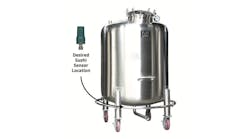I fly monthly between two of the most congested airports in the nation, New Yorks LaGuardia and Chicagos OHare. So, not surprisingly, I often face significant flight delays. They are frustrating but at least I can get some work done while waiting in the terminal or on the tarmac.
Delays undoubtedly also are frustrating to maintenance crews at plants. Plus, with staffing so thin at many sites, companies can ill afford to squander technicians time.
Going to the stores to get parts, waiting for a specialist in a particular craft to arrive, or holding up until a supervisor okays certain work are among the factors that commonly delay the completion of a task and take a toll on maintenance efficiency. As Tim Finigan explains (p. 20), a proven method, called Labor Activity Analysis (LAA), can provide insights on what is contributing to delays at your plant.
You may be surprised by what you find. Delays may be eating up far more time than you realize and you may have been blaming the wrong culprits.
Many plants mistakenly or for simplicity equate the amount of wrench time with maintenance productivity. It isnt that straightforward, however, cautions Finigan. You also must consider how efficiently maintenance staff use that time and the quality of the job done. The overall measure of maintenance productivity must account for the percent of time staff are performing direct work, how long jobs take compared to a standard, and the amount of work that is flawed and must be redone, he stresses. Thats a lot tougher to get a handle on, he notes, and thats where an LAA comes into play. It shows how various factors actually affect productivity and, thus, provides the information necessary to target key culprits to optimize wrench time.
Inadequate training is one likely reason that jobs may be taking longer and requiring more rework. This is exacerbated at many plants by the depleted ranks, because of layoffs or retirements, of skilled old hands, and the concomitant loss of their expertise. And that situation will be getting worse not better, as more baby boomers leave the workforce. An LAA can supply data that may even convince the bean counters that false economies are being taken and that more and better training is crucial.
Even if you still are blessed with a skilled and experienced maintenance staff, dont undervalue ongoing training. While new technologies, such as smart instruments, offer enhanced tools for predictive maintenance, taking fullest advantage of them requires training. For instance, Neal Rinehart of Fisher Controls points out the power of todays diagnostic capabilities for control valves (p. 47) but bluntly states, Technology without training almost always fails to deliver optimum results.
Training also has a regulatory angle. As Mike Hazzan of Chemetica stressed in discussing problems companies have in complying with the mechanical integrity element of OSHAs Process Safety Management Standard (CP, August 2005, p. 30), training of maintenance technicians often is a serious weakness. He adds that plants also too often allow certifications in welding, etc., of maintenance technicians to lapse.
Theres certainly plenty of room to improve productivity. Maintenance staff themselves undoubtedly understand this and, presented with a positive program, should welcome the opportunity to increase their skills and efficiency.

